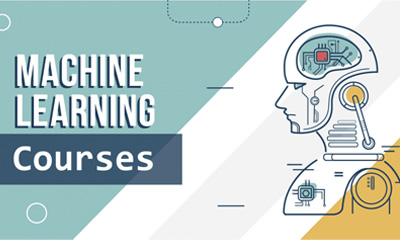Aws Solution Architect Professional
The AWS Certified Solutions Architect Professional course is an advanced training program designed for individuals who want to deepen their understanding and expertise in designing distributed systems and applications on the AWS platform. This course will cover complex and scalable AWS architectures, cost optimization strategies, and best practices for security and compliance.
Course Rating :
4.8 (926)

Course Overview
The AWS Certified Solutions Architect Professional course is an advanced training program designed for individuals who want to deepen their understanding and expertise in designing distributed systems and applications on the AWS platform. This course will cover complex and scalable AWS architectures, cost optimization strategies, and best practices for security and compliance. Participants will be equipped with the skills necessary to design and deploy reliable, efficient, and cost-effective solutions on AWS, preparing them for the AWS Certified Solutions Architect Professional certification exam.
Key Points
- Advanced Architectural Design: In-depth study of designing highly available, fault-tolerant, and scalable systems on AWS.
- Cost Optimization: Techniques for cost reduction and optimization in AWS deployments.
- Security and Compliance: Best practices for ensuring security and compliance in AWS architecture.
- Migration and Transfer: Strategies for migrating complex, multi-tier applications on AWS.
- Network Design: Designing and deploying scalable, highly available, and fault-tolerant networks on AWS.
Course Curriculum
Introduction to Cloud Computing
- What is cloud computing?
- Benefits of cloud computing
- Cloud service models (IaaS, PaaS, SaaS)
- Cloud deployment models (Public, Private, Hybrid)
Introduction to AWS
- Overview of Amazon Web Services
- Key AWS services
- AWS global infrastructure (Regions, Availability Zones)
- Setting up an AWS account
Navigating the AWS Management Console
- Introduction to the AWS Management Console
- Overview of key AWS services in the console
- Managing AWS resources using the console
Compute Services
- Amazon EC2 (Elastic Compute Cloud)
- Launching EC2 instances
- EC2 instance types and pricing models
- Managing EC2 instances
- AWS Lambda
- Introduction to serverless computing
- Creating and deploying Lambda functions
- AWS Elastic Beanstalk
- Simplifying application deployment
- Using Elastic Beanstalk for web applications
Storage Services
- Amazon S3 (Simple Storage Service)
- Creating and managing S3 buckets
- S3 storage classes and use cases
- Securing data in S3
- Amazon EBS (Elastic Block Store)
- Creating and attaching EBS volumes
- EBS volume types and performance
- Amazon EFS (Elastic File System)
- Creating and managing file systems
- EFS use cases and performance
Database Services
- Amazon RDS (Relational Database Service)
- Setting up RDS instances
- RDS engine options (MySQL, PostgreSQL, etc.)
- Backup and recovery
- Amazon DynamoDB
- Introduction to NoSQL databases
- Creating and managing DynamoDB tables
- Amazon Redshift
- Data warehousing with Redshift
- Creating and managing Redshift clusters
Virtual Private Cloud (VPC)
- Introduction to VPC
- Creating and configuring VPCs
- Subnets, route tables, and internet gateways
Advanced Networking Concepts
- Network Access Control Lists (ACLs) and Security Groups
- VPC Peering and Transit Gateways
- AWS Direct Connect and VPN
Content Delivery and DNS
- Amazon CloudFront
- Setting up CloudFront distributions
- Caching and content delivery
- Amazon Route 53
- Configuring DNS with Route 53
- Domain registration and management
Identity and Access Management (IAM)
- Introduction to IAM
- Creating and managing IAM users and groups
- IAM roles and policies
Data Security
- AWS Key Management Service (KMS)
- Creating and managing encryption keys
- AWS Certificate Manager
- Managing SSL/TLS certificates
- Amazon Macie
- Identifying and protecting sensitive data
Compliance and Governance
- AWS CloudTrail
- Logging and monitoring API activity
- AWS Config
- Resource inventory and configuration history
- AWS Organizations
- Managing multiple AWS accounts
Designing Multi-Tier Architectures
- Understanding multi-tier architecture
- Designing highly available and scalable architectures
- Load balancing and auto-scaling
Microservices and Serverless Architectures
- Introduction to microservices
- Designing microservices with AWS Lambda and API Gateway
- Event-driven architectures with Amazon SNS and SQS
Data Storage and Management
- Advanced S3 features (Lifecycle policies, Glacier)
- Data management with AWS Data Pipeline
- Large-scale data processing with AWS Glue
Designing for High Availability
- High availability principles
- Multi-AZ and Multi-Region deployments
- Health checks and failover mechanisms
Disaster Recovery Strategies
- Backup and restore
- Pilot light, warm standby, and multi-site approaches
- Disaster recovery planning and implementation
AWS Pricing Models
- Understanding AWS pricing
- Cost management tools (AWS Budgets, Cost Explorer)
Cost Optimization Techniques
- Right-sizing EC2 instances
- Using Spot Instances and Reserved Instances
- Optimizing storage costs
Implementing Cost Control
- Tagging resources for cost allocation
- Setting up billing alerts
- Leveraging AWS Trusted Advisor for cost optimization
Monitoring AWS Resources
- Amazon CloudWatch
- Setting up CloudWatch metrics and alarms
- Creating CloudWatch dashboards
Logging and Auditing
- Amazon CloudTrail
- Monitoring API activity
- Analyzing CloudTrail logs
Automation and Infrastructure as Code
- AWS CloudFormation
- Creating and managing stacks
- Writing CloudFormation templates
- AWS CDK (Cloud Development Kit)
- Developing infrastructure with CDK
- Deploying CDK applications
Migrating Applications to AWS
- AWS Migration Hub
- Tracking and managing migrations
- AWS Application Migration Service
- Migrating on-premises applications to AWS
Hybrid Cloud Solutions
- Integrating on-premises environments with AWS
- AWS Outposts
- Running AWS services on-premises
- AWS Storage Gateway
- Extending on-premises storage to the cloud
Exam Overview
- Understanding the exam format and structure
- Key topics and skills assessed
Study Strategies and Resources
- Recommended study materials and resources
- Effective study strategies and tips
- Practice exams and mock tests
Final Project
- Defining a real-world cloud architecture project
- Designing and implementing the architecture using AWS services
- Presenting and evaluating the project
Final Review and Certification
- Course recap and key takeaways
- Certification exam and project presentation
- Awarding of certificate of completion
- Networking and community building opportunities
Learning Outcome
Participants will:
- Master the advanced concepts of AWS architecture and design.
- Learn to optimize costs while deploying systems on AWS.
- Understand the security measures and compliance standards necessary for AWS solutions.
- Acquire skills in migrating and transferring large-scale applications to AWS.
- Be able to design robust and efficient networks within the AWS ecosystem.
Who this course is for?
The course is ideal for:
- Experienced solutions architects and IT professionals who want to advance their skills in AWS.
- Individuals holding the AWS Certified Solutions Architect Associate certification looking to step up to a professional level.
- Cloud professionals aiming to validate their expertise with a professional-level certification.
FAQs
Participants should hold the AWS Certified Solutions Architect Associate certification or have equivalent experience.
The course duration will be specified based on the training schedule.
Yes, the course includes hands-on labs and real-world scenario-based training.
Support will be available through various channels, including forums, email, or live chat, depending on the training provider.
Certifications
Upon successful completion of the course, participants will be ready to sit for the AWS Certified Solutions Architect Professional certification exam.
Enroll Free Demo Class
Have Any Questions ?
- 521 Dyson Rd HainesCity FL 33844
- info@rbcloudgenx.com
- +1 8043007153
Our Other Courses
Data Science is an interdisciplinary field that combines statistical analysis, machine learning, and domain expertise to extract insights from data.
Machine Learning is a branch of artificial intelligence (AI) that enables systems to learn from data and improve over time without being explicitly programmed.
The Artificial Intelligence (AI) course is designed to provide a comprehensive introduction to the concepts, techniques, and applications of AI.
This comprehensive Generative AI course is designed to empower participants with the knowledge and skills to harness the power of artificial creativity.
Rate This Course !
Click on a star to rate it!
Average rating 0 / 5. Vote count: 0
No votes so far! Be the first to rate this post.





